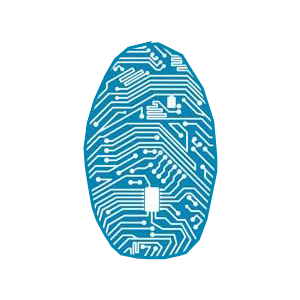HCI - Human computer interaction
Human computer interaction (HCI) researches the design and use of computer technology, focusing particularly on the interfaces between people (users) and computers. Researchers in the field of HCI both observe the ways in which humans interact with computers and design technologies that lets humans interact with computers in novel ways. The interface is crucial to facilitating the interaction between humans and the computers.
CHI (Computer-Human Interaction) here has a narrower focus than HCI; CHI is associated mainly with computer science.

HF&E - Human factors and ergonomics
Human factors and ergonomics (HF&E), also known as comfort design, functional design, and user-friendly systems, is the practice of designing products, systems or processes to take proper account of the interaction between them and the people who use them. The International Ergonomics Association defines HF&E as follows: “Ergonomics (or human factors) is the scientific discipline concerned with the understanding of interactions among humans and other elements of a system, and the profession that applies theory, principles, data and methods to design in order to optimize human well-being and overall system performance.”
HCI Studies, Visions and Demonstrations
In 1958, the commercial availability of transistor-based computers allowed for previously unimaginable possibilities to extend on the integration between humans and computers. Before, only computer engineers were able to use computers. While that was still going to be the case for a while after the implementation of transistor-based computing, the learning gap reduced dramatically.
Improving the design of buttons, switches, and displays came naturally because of human factors, kicking off the rise of Human-Computer Interaction. Experts like Brian Shackel published two important book on the subject: “Ergonomics for a Computer” (1959) and “Ergonomics in the design of a Large Computer Console”(1962).
An engineer, Douglas Engelbart, was a big pioneer that made demonstration of system made to reduce human error, but unfortunately lacked funding to improve on a system that still required too much training to use as intended.
In 1960, J.C.R Licklider coined the name man-machine symbiosis for his vision. One of its aim was to use the power of computers in order to resolve complex technical problems. Already in 1962, Licklider and Wes Clark saw the need of what they called the “on-line man-computer communication”.
They envisioned many different development opportunities:
- Time sharing of a computer among many users
- Electronic surfaces to display and communicate symbolic and pictorial information
- Interactivity
- Real-time support for programming
- Information processing
- Large-scale information storage
- Retrieval systems
- Facilitation of human cooperation
Computer Graphics: Realism and Interaction
1965 marked the beginning of a shift in computer science research, while most computers researchers continued their developpement on high end computer graphics systems built on the DEC PDP-1 and PDP-7, some researchers started working on a new section of computer science because they realised that the machines required to use these graphics systems (like the DEC PDP-1 or PDP-7) were too expensive for the common man, the cost of their high-resolution display alone was equivalent to more than US$100.000
So in 1973 the new computer system called the Xerox Alto signaled the arrival of a new section of computer graphics which would focus on the interaction between the man and the machine. This was due to the fact that this machine was not capable to support high-end graphics research however it could be used for research on graphical interfaces which would lead to more affordable and interactive personal machines that also supported good graphic systems.
This lead to the computer graphics department being split into two main sections, most researches continued working on better graphic systems run on expensive machines, while others started working on graphic systems which could run on more affordable machines. William Newman, co-author in 1973 of Principles of Interactive Computer Graphics, describes this change in computer graphics research as the difference between "realism" and "interaction".
Thus this new field of computer interaction marked the prominent start of the arrival of affordable personal machines for the everyday man who would not need prior training to operate this machine with ease which is described as "user oriented design", this would create a good symbiosis between man and machine.
Future of HCI - A glimpse on the future
The pervasive computing is the growing trend of embedding processors in everyday life objects. The main goal of pervasive computing is to make the technology simple to use and present everywhere in order to integrate the physical word with the virtual world. Mark Weiser, a chief scientist at Xerox PARC, coined the term in 1988 and almost 30 years later we are witnessing a third wave in computing. First there were the mainframes, each shared by lots of people. Then personal computer arrived and every person had the possibility to use a computer at home, school and so on. Finally we are going to a world where there are many tiny digital devices for each person, all around him.
Computers are everywhere now, from the coffe machine, the laundery, the glasses you wear and the mobile you are reading this article with.
This phenomenom is called pervasive computing and the term was coined by Mark Weiser in 1988, much before everything is happening now was even thinkable.
The core vision of this phenomeom is that technology should embedded in common use objects, all around us.
We are running toward a world where there are many tiny digital devices for each person, all around him.

The question is "How this is going to affect the HCI"? Mark Weiser proposed three categories of pervasive system devices:
- Table: wearable centimetre sized devices
- Pads: Hand-held decimetre sized devices
- Boards: Metre sized interactive display devices
Augmented reality is another field strongly bounded with the pervasive computing processes.